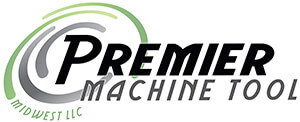Sawing expert, Garry Toddish, has been selling Marvel Saws for over 30 years. As a district sales manager, Garry has acquired knowledge like no other. Garry has created the following guide intending to help improve cutting efficiency by giving practical general information on Band Sawing “Rules of Thumb.”
Proper blade selection is Critical in sawing performance.
1) Tooth pitch selection. Look for 3 – 18 teeth in contact with the widest part of the material, with the optimum number of 10 teeth. (I.E. a 4/6 pitch blade will cut well in material with a cross section of between 1” – 5” wide. With an average of 5 teeth per inch, there would be 5 teeth in 1” material and 25 teeth in the 5” material.)
Proper blade break-in procedures can affect blade life and performance by as much as 60%.
1) On easy to cut materials, blade break in should run at 1/3 to ½ normal cutting rates for First 50 – 100 square inches of material, then increasing feed pressure to achieve normal cutting rates.
2) Tough, work hardening material requires break in at ¾ normal cutting rate for the first 25 square inches, gradually increasing feed pressure to reach maximum cutting rate after 50 square inches.
A good mixture of cutting fluid can increase blade life by as much as 50%.
1) Follow the cutting fluid manufacture’s recommendation for the proper ratio for Band Sawing. It is generally accepted that a concentration of 5 – 7% or 15:1 – 20:1.
2) When cutting dry, reduce blade speed by 40 – 50%, cutting rate 40 – 50%, and expect blade life to decrease by approximately 40 – 50%.
Material types determine blade Speeds.
1) The softer the material, the faster the blade speed. Soft material allows chip creation easily, requiring the faster blade speed to allow the chip to exit the cut.
2) The harder the material, the slower the blade speed. Hard material does not easily allow chip creation. If a chip is not generated, than all we have is friction, friction is heat and heat work hardens.
3) Refer to a cutting chart for blade speeds.
Material types determine cutting rates.
1) The softer the material, the faster the cutting rates, requiring less feed pressure and allowing for higher feed rates.
2) The harder the material, the slower the cutting rates, requiring more feed pressure and slower feed rates.
3) Refer to cutting chart for cutting rates.
Cutting Rates = Cutting Times.
1) Cutting times are determined by taking the total square inches of material to be cut divided by the cutting rate of the material to give time of cut. I.E – 24 square inches of 304 S.S. with a cutting rate of 3 square inches per minute. 24 ¸ 3 (square inches of material ¸ cutting rate) = 8 minute cut time. Cutting times are achieved by feed pressure and feed rates.
2) Refer to a cutting chart for cutting rates.
When cutting materials of hardness other than the normal hardness listed for that material type, multiply speed or cutting by the factors listed below to arrive at speeds and cutting rates for hardened material.
Rockwell Brinell Speed Factor _Cutting Rate Factor
Up to 20 225Bhn 0 0
20-28Rc 225-275 .75 .75
28-35Rc 275-325 .60 .54 Hardness
35-40Rc 325-375 .50 .40
Premier Machine Tool Midwest is proud to represent Marvel Saws in the State of Wisconsin and UP of Michigan.
Call today to learn more: 414-254-5150 / info@pmtmidwest.com


